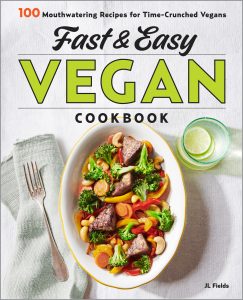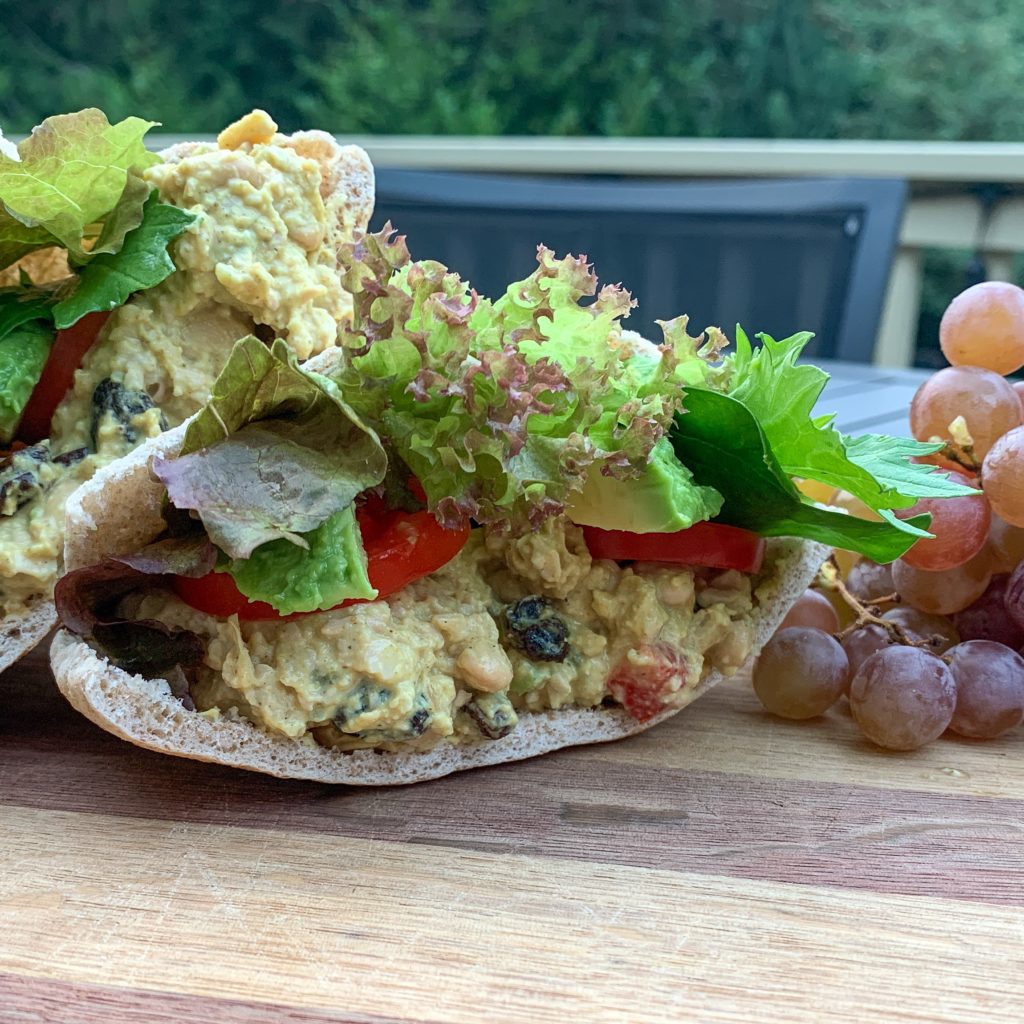Phantom of the Okra

Gorgeous green and red okra at my local farmers market.
I
Love
Okra
Yup, you just knew I was a weirdo! It might be my “southern” upbringing by my Louisianan mom, but I just can’t get enough of this amazing vegetable. I used to work with a firefighter who’d serve pan-fried breaded okra for breakfast every once and a while—heaven! If there’s okra on the menu, I’m going to get it (along as it’s vegan, that is). Take me to an Indian restaurant, I’ll order Bhindi (Okra) Masala every time! And gumbo, oh the gumbo, it’s just not gumbo without okra. In fact, gumbo is an African word for okra.
All About Okra
Okra gets a bad rap due to its mucilaginous property, you know, the fact that it gets all slimy. But proper cooking or keeping the pods whole can minimize that. Pickling and quick cooking prevent sliminess too. However, okra is a great thickener in soups and stews because of this gelatinous quality, giving gumbo its characteristic thickness. You can also eat okra raw. It is popular in African, Indian, Middle Eastern, Caribbean, and Southern US cuisines.
Okra, often called ladyfingers in other parts of the world, is a warm-growing crop, part of the mallow family, related to cotton, cacao, durian, hollyhock, hibiscus, and rose of Sharon, with ornamental flowers that look like hibiscus flowers. Botanically it is a fruit, as the pods are full of seeds. The plant itself can grow very tall, around six feet, unless dwarf varieties are planted. The pods are generally green, but orange, and red pod varieties are available as well (spoiler alert, the red varieties turn green when cooked!). Native to Ethiopia, okra was brought to the US during the slave trade.
Besides eating the pods, people often dry the seeds, grind them, and brew as a substitute for coffee. Reportedly, soldiers drank this during the Civil War when coffee beans were scarce. Ground dried okra seeds can also be used as a thickener.
Per cup, fresh okra contains (according to the USDA):
- 33 calories
- 1.93 g protein
- 7.45 g carbohydrates
- 0.19 g fat
- No cholesterol
- 3.2 g total dietary fiber
- 82 mg calcium
- 0.62 mg iron
- 57 mg Magnesium
- 60 µg Folate
- 61 mg Phosphorus
- 299 mg Potassium
- 23 mg Vitamin C
- 716 IU Vitamin A
- 31 µg Vitamin K
There are many benefits to okra. It is high in fiber, aiding in digestion and gut health. The slimy mucilage is said to bind with cholesterol for elimination from the body. It is high in Vitamin K, which is excellent for bone health, but can interfere with blood clotting, so those on blood thinning medications should be cautious with eating large amounts of okra.

Finger-length okra pods are best, maybe that’s why they’re called ladyfingers in other parts of the world. You won’t want them much longer that this.
Select okra pods that are 2-3 inches long, or about the length of your fingers, and firm. These are young pods that will be nice and tender when cooked. Older, longer pods tend to get stringy, like old string beans, and are not nice to eat at all, so avoid those. Make sure they don’t have any black tips or streaks along the ridges, which indicate that the pods were picked many days ago and are at risk of going bad. Okra does not store long, only two to three days. Refrigerate the pods unwashed and dry, loosely wrapped in paper in the vegetable crisper, as they will mold quickly if stored wet. Use them immediately if you notice the telltale darkened ridges or tips, as they are soon to spoil.
Don’t cook okra in aluminum pots, as they will react with the pan and become discolored.
Freezing Okra
Okra was one vegetable I really, really missed after going plastic-free and zero-waste. I’d always kept bags and bags of frozen okra in my freezer just so I could have my okra fix. But then I discovered that several vendors at my local farmers markets brought fresh okra starting in July! They grow okra in Central and Eastern Washington where springs and summers area warmer than Seattle, a better climate for these heat-loving plants.
You can freeze your own okra using the same process as I discussed in After Party Food—No Food Wasted. There is one key thing for okra freezing success, which is when you cut the okra! If you cut before blanching, you’ll end up with a big pot of slimy water, the consistency of egg whites! So heed my advise, if you want to freeze okra in chunks, don’t cut them until after blanching and cooling. You can freeze the pods whole, but I can pack a whole lot more chunked okra in mason jars than whole pods, so I cut them. In addition, it saves me prep time when it comes to cooking later, as the okra is already chopped and ready to go into whatever I’m making.

Prep an ice bath before you start blanching the okra.

I like to cut my blanched okra into 1/2-inch chunks for freezing.

Arrange your blanched okra on silicone baking sheet or towel-covered baking trays.

Frozen okra packed into mason jars.
My absolute favorite way to eat okra is in Bhindi Masala, a spicy Indian okra dish with an aromatic tomato-onion gravy. I freeze okra just so I can eat this dish all year long! I use a recipe by Isa Chandra Moskowitz from her book, Isa Does It, that utilizes okra and black-eyed peas, but I love okra so much that I substitute more okra for the peas. I serve it over rice with some of my homemade Vegan Yogurt and Sweet Potato Tortillas.
Recently, my mom emailed me a link to Susan Voisin’s Fat Free Vegan Kitchen’s Oil-Free Gluten-Free Oven-Fried Okra with the sweetest note, “I know you love okra and I just read this recipe…you might want to check it out!”
Well, check it out, I did! And…it was pretty good! I used some of my okra from the freezer to see how it’d work. Brought back memories of weekend fried okra breakfasts at the fire station!

Fat Free Vegan Kitchen’s Oil-Free Gluten-Free Oven-Fried Okra turned out pretty good!
How do you like your okra? Is it something you’ve tried before? Will you give it a try now?
This post is Day 13 of VeganMoFo (Vegan Month of Food) 2019, with a new blog post every day for the month of August. Check out these other posts you may have missed from last week:
Day 7—Pasta Pizza—Your Kids’ (Maybe Your Inner Kid’s) New Favorite! Trust me, you want this recipe!
Day 8—Vegan Tea Party and Better-than-Egg Salad Recipe And this one too!
Day 9—Broccoli for Dessert! Broccoli Chocolate Cake Oh yeah, don’t miss this!
Day 10—Homemade Udon Noodles Finally, plastic-free!
Day 11—Before Gatorade, We Drank Switchel What? You’ll have to read and see!
Day 12—Eating Pears with a Knife and Fork…Poached Pears It’s a Star Wars thing…I had to look it up!
And there’s only one week left to enter to win…
Fast & Easy Vegan Cookbook Giveaway
 I’ll draw one winner August 21, 2019 for JL Fields’ new , before you can even buy it online or in stores!
I’ll draw one winner August 21, 2019 for JL Fields’ new , before you can even buy it online or in stores!
You want this cookbook! It brings a new selection of fresh meals to your table, pronto! From one-pot to pressure cooker, choose your favorite cooking method―without being held hostage for hours in your kitchen. It includes 100 quick and tasty vegan recipes, plus tips for ingredient substitution and other easy customizations, and handy labels for gluten-free, nut-free, oil-free, or soy-free diets.
So hurry and enter by August 20th. Open to U.S. residents only.
Do you like this post? Please share....
[mashshare]
If you liked this post, you might like one of these:
Categories:
Tags:

[Trī-māz-ing]
Cindy wants you to be Trimazing—three times better than amazing! After improving her health and fitness through plant-based nutrition, losing 60 pounds and becoming an adult-onset athlete, she retired from her 20-year firefighting career to help people just like you. She works with people and organizations so they can reach their health and wellness goals.
Cindy Thompson is a national board-certified Health and Wellness Coach, Lifestyle Medicine Coach, Master Vegan Lifestyle Coach and Educator, Fitness Nutrition Specialist, Behavior Change Specialist, and Fit2Thrive Firefighter Peer Fitness Trainer. She is a Food for Life Instructor with the Physicians Committee for Responsible Medicine, Rouxbe Plant-Based Professional, and Harvard Medical School Culinary Coach, teaching people how to prepare delicious, satisfying, and health-promoting meals.
She provides health and lifestyle coaching at Trimazing! Health & Lifestyle Coaching. Cindy can be reached at info@trimazing.com.
Subscribe to the Trimazing Blog
Receive occasional blog posts in your email inbox.
Subscribe to the Trimazing Blog
Receive occasional blog posts in your email inbox.

 Powered by Gleam
Powered by Gleam


















